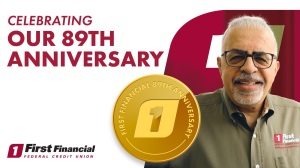
Don’t get your heart broken in an online dating scam or by losing the funds in your bank account this Valentine’s Day. The idioms “love is blind” and “looking through rose-colored glasses” might sound cliché, but call attention to an important phenomenon – feelings of love can cause you to throw caution to the wind and overlook flaws in a romantic interest that you might typically not ignore. It’s harder to ignore red flags that are staring right at you, like when your romantic interest is sitting directly across from you. However, in an age where it’s increasingly common to meet your partner on any number of dating apps or websites, you might have to look for those red flags before the first date even happens. Repeatedly ignoring invitations to video chat or meet in person, or asking for money before you’ve done so, might seem like obvious red flags. Nonetheless, those rose-colored glasses can help you make an excuse for anything. Make sure you aren’t blinded by love and can determine if those “red flags” are actually a romance scam.
What is a Romance Scam?
A romance scam begins like many romantic pursuits ordinarily do in the twenty first century—you match with someone on a dating app or website, or you have a new connection waiting for you on social media. In almost all instances, they reach out to you first and express their interest in getting to know you. It’s not long before you find yourself texting them at all hours of the night or longing to hear their voice over the phone. That’s because, somehow, this person checks off every box on your list. You like a certain musician? They like that musician too. You’ve been dreaming of visiting a remote island? They are too. You start wondering where they have been all your life. Eventually, meeting them in person seems like a natural next step. Then, the excuses start to flow. They say they want to meet you, but “living on an off-shore oil rig” or “working at a military base” is getting in the way. They reassure you that they will meet you one day, but want to keep pursuing a romantic relationship online in the meantime. However, this person has no intention of building a relationship with you and is interested in one thing—your money. If they get it, they will likely disappear with your money and hopes of a relationship without a trace.
What are the Favorite Lies of Romance Scammers?
The lies a romance scammer will tell to get your money are endless. A lie might sound outrageous, but the romance scammer is a trained professional. They typically cultivate a relationship with you over weeks, months, or even years before they ask for any funds. The FTC compiled a list of romance scammers’ favorite lies to watch out for to protect your heart and money. Popular reasons to avoid meeting in real life or needing money can sound like this:
- “I or someone close to me is sick, hurt, or in jail.”
- “I’m in the military far away.”
- “We’ve never met, but let’s talk about marriage.”
- “I’m on an oil rig or ship.”
- “I can’t afford to visit you or meet you without it.”
The FTC warns that many romance scammers might even flip it on you, offering to do you a favor. This might sound like an offer to teach you how to invest in cryptocurrency or to send you a valuable package. In both scenarios, the money you give to the romance scammer to “invest for you” or to “ship the valuable package” ends up right in their pockets.
What are Other Red Flags?
While lies are an important piece of the romance scam puzzle, the ways they would like to receive the funds complete it. If your love interest is requesting payment through uncommon methods, it is most likely a scam. The scammer will usually ask you to send cryptocurrency, gift card codes, or wire money. This is because these transactions are hard to track and do not have protections for buyers or senders in place. Another red flag is if your family and friends express concern over your new love interest. Your loved ones want nothing but the best for you, so it should sound the alarm if they express apprehension when you tell them about your online love interest and their request for funds.
How Can You Protect Yourself from Romance Scammers?
- Never send money to your online love interest. Nobody legitimate will claim that sending cryptocurrency, gift card codes, or wiring money are the only ways you can help them. On the flip side, never trust someone who insists they can teach you how to invest or send you a valuable package to improve your financial situation. They are only looking to improve theirs.
- Reverse image search pictures. Another cliché that applies to romance scams is, “If there’s a will, there’s a way.” Your online love interest should, at the very least – find a way to video chat if they can’t meet you in person. However, the reason they can’t video chat or meet in person is because romance scammers often use fake identities. You can reverse search profile pictures or other images they send you to see if the details they tell you about themselves are adding up.
Most importantly, the FTC encourages everyone to do their part. You can help stop romance scammers by reporting suspicious profiles or messages to the platform where you saw them. You can also report your experience directly to the FTC at reportfraud.ftc.gov. Lastly, pass information regarding romance scams along to a friend. You may not have fallen victim to a romance scam, but someone you know can.
First Financial wants to help protect your personal and financial information and your heart, during the season of love. If you have any concerns or have reason to suspect that your information has fallen into the hands of a scammer, don’t hesitate to contact us at 732.312.1500 or visit us at your local branch.






